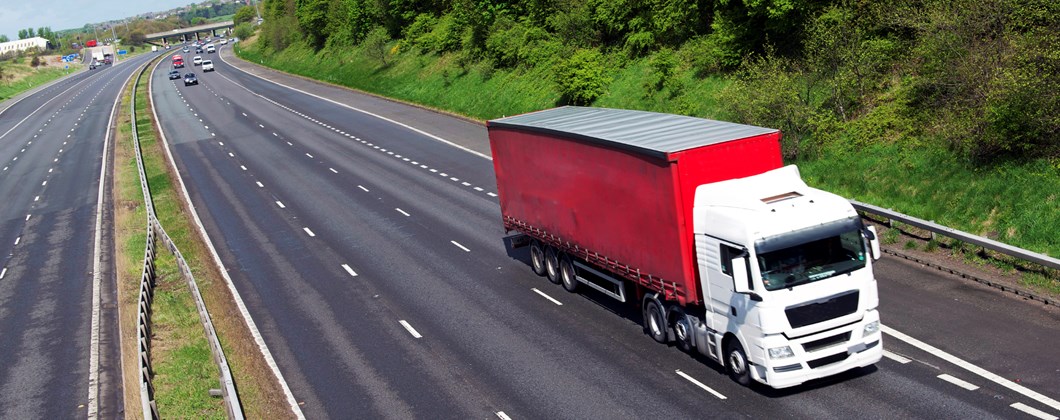Best Practices for Laying Up Commercial Vehicles

In the midst of the COVID-19 pandemic, organisations across the UK have halted key business operations in order to follow government guidelines—including stopping all non-essential travel. As a result, many organisations that utilise commercial vehicles for a variety of purposes (eg performing deliveries, picking up goods or transporting workers between job sites) have begun ‘laying up’ their vehicles.
Laying up a commercial vehicle or fleet allows an organisation to adequately store and preserve its vehicles while they aren’t being used on the road. This can be an effective method for keeping your vehicle(s) in good condition while they are being kept off of public roads for an extended period (eg months or years). What’s more, this technique can also help ensure your vehicle(s) will be able to smoothly transition back to normal usage when you are permitted to operate them on the road again.
Have a look at the following guidance to learn best practices for laying up your commercial vehicle or fleet and how to safely get your vehicles back on the road after the lay-up period ends.
Before Laying Up Your Vehicle or Fleet
Before you lay up your commercial vehicle or fleet, keep the following considerations in mind:
- Insurance and tax requirements—Keep in mind that you will still have to follow insurance and tax requirements for your vehicle or fleet, unless you declare the vehicles as ‘off road’ by making a Statutory Off Road Notification (SORN). Implementing a SORN informs the Driver and Vehicle Licensing Agency that you will not be driving or parking the vehicle(s) on public roads for an extended period. In addition to making a SORN, you should consider purchasing specialised cover for your laid-up vehicles, such as laid-up vehicle insurance. For more information, contact us today.
- Safe storage—When determining where to store your laid-up vehicle(s), be sure to select a location that can offer maximum security measures and adequately protect your vehicle(s) from the elements (eg fires or flooding). A garage or other indoor storage building with proper ventilation is ideal. Make sure the storage area is secured with locks, CCTV and restricted access controls. Only allow competent, trusted employees to have access to this storage area. Further, ensure your vehicle(s) possess advanced security features to help deter potential thieves as well.
- Vehicle maintenance—Before leaving your vehicle(s) in storage for an extended period, it’s important to conduct robust cleaning and maintenance procedures. These include:
- Washing the exterior of the vehicle(s) with proper cleaning agents, paying special attention to vehicle undersides and tyres
- Cleaning and vacuuming the interior of the vehicle(s) to remove dust and rubbish build-up
- Filling all vehicle fuel tanks to prevent moisture from accumulating and keep the seals from drying out
- Storing any additional petrol or diesel on-site in a safe location, within properly sealed containers
- Ensuring all vehicle tyres are inflated to the recommended pressure
- Connecting all vehicle batteries to a battery maintainer, if possible
- Consulting the vehicle manufacturer’s instructions on how often you should change the oil and whether you should leave the parking brake on
- Using chocks to keep vehicles from moving (if you can’t leave the parking brake on)
- Inspecting the vehicle(s) for any other potential damages and making repairs or replacements as needed
While Your Vehicle or Fleet Is Laid Up
Once your vehicle or fleet is in storage, you (or other competent, trusted employees) should still try to visit the storage area once a week (or as much as safely possible) to ensure the vehicle(s) remain in good condition. When visiting your vehicle or fleet:
- Start each vehicle engine and run it for about 15 minutes to help recharge the battery. However, never leave a vehicle with the engine running. In addition, do not run a vehicle engine within an enclosed structure, seeing as the exhaust fumes can be toxic. Briefly drive the vehicle(s) outdoors (but still on your private property) to run the engine.
- If you have any electric vehicles, press the start button so that the ‘ready’ light turns on and leave each vehicle running for about 10 minutes to help keep it charged.
- Release the parking brake (if it was on) and move each vehicle a short distance back and forth while the engine is running to prevent the brakes from seizing over time.
- Check all vehicle tyres to ensure they are maintaining proper pressure. Inflate them if needed. Briefly driving a vehicle a short distance or routinely relocating it to a different part of the storage area will help prevent the tyres from getting flat spots.
- Check all oil and fuel tanks to ensure they aren’t leaking. Per the vehicle manufacturer’s instructions, conduct oil changes as needed. Also, make sure to lubricate vehicle locks as needed.
- Clean the interior and exterior of each vehicle to prevent dust or waste build-up. Remove animal waste (eg bird or rodent droppings) from vehicle exteriors to prevent paint or metal damage.
Getting Back on the Road
When it’s safe to start operating your commercial vehicle or fleet on public roads again, take the following precautions:
- Check that each vehicle’s MOT, tax and insurance cover are updated. This will cancel any existing vehicle SORNs. Keep in mind that the government has issued an MOT exemption in response to the COVID-19 pandemic—which means that vehicles will not be required to get an MOT test (even if they are overdue) between 30th March 2020 and 30th September 2020. However, a vehicle must still be considered ‘roadworthy’ in order to operate it on public roads.
- Check all fuel levels to ensure there haven’t been any leaks. In addition, check all tyres for adequate pressure, check all windscreens and wipers for any cracks and ensure all brakes are in good condition.
- Check under each vehicle bonnet for evidence of pests or rodents (eg chewed belts, hoses or wires).
- If any battery cables were disconnected, reconnect them and ensure the terminals are clean.
- Clean each vehicle to remove any accumulated dust, dirt or waste.
- Schedule a full-service appointment for each vehicle at a qualified garage as soon as possible.
For additional guidance and insurance solutions, contact us today on 0333 200 0053 or if you would like a quote for your fleet insurance, speak to a member of our specialist team.

